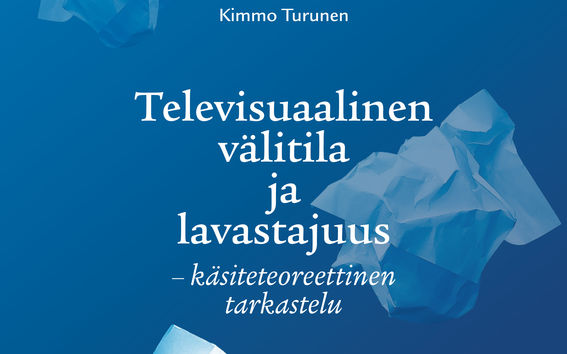Defence in the field of Scenography and Costume Design: MA Kimmo Turunen
When
Where
Event language(s)
MA Kimmo Turunen will defend the dissertation Televisuaalinen välitila ja lavastajuus - käsiteteoreettinen tarkastelu on Friday 24 May 2019.
Opponent: FT Riku Roihankorpi, University of Tampere
Custos: Prof. Liisa Ikonen
More information:
The starting point for my practice-led research is to intertwine theoretical and philosophical concepts with experiences that stem from my own artistic authorship during my career as a production designer in television (a designer of sets and also the wider artistic concept) spanning over twenty years. My study can be seen as a thought experiment viewed through the framework of philosophy, and focusing on questions such as the following:What kinds of spatial experiences are generated by visual displays and screens? What kinds of relationships emerge from this situation, and from whose perspective are these relationships assessed?
The goal of my research is to perceive and understand the special position that a televisual production designer has in the midst of an electronic media environment. This position is expanded from professionalism towards a framework linked with all encounters taking place by the screens of all media. I’m aiming to create concepts which can be used to describe the event environment shared by authors and spectators; the world in which the surface of the electronic image signifies a borderline where relationships between different parties are created. I do not create these concepts from nowhere, but my key method is to use existing vocabulary in a new context within the theoretical framework chosen by me. New meaning may sprout from these contexts. The most important umbrella term through which I approach my subject and its different manifestations, is televisual in-between space.
I plan to observe my experiences on sector-specific contexts and meanings gained throughout the years within a framework based on philosophy, which reflects both phenomenological and post-human themes, and finally narrowing down most crucially to the thinking and concepts of Gilles Deleuze and Félix Guattari.
Through its philosophical points of reference, my research reflects the inseparable but also controversial and ambivalent relationships between different opposites, as well as elements and phenomena regarded as mutually contradictory, such as the dynamics and unstoppable movement between subject and object, self and other, or distance and closeness. The dynamics bring forth contemplation on, for example, telepresence, and the relationship between multiplicity and self.
Our relationships with screens and visual displays are also inevitably connected with spectatorship and authorship, which are simultaneously singularly and collectively attuned. In addition to televisual in-between space, this set-up also generates another key concept for my research: televisual designership. I use this concept to refer to something more than a professional community; and to introduce, next to a self-centred or anthropocentric perspective, a dimension in which an internal and personal viewpoint of the world, generally regarded as a sense of ‘self’, turns towards a multi-centred approach. In this perspective, multiplicity or an object can be seen as an active operator and a source of motion. A human being or the inner self is no longer the measure of all things. The world manifests itself on the most extensive levels, and its rhizomes reach the furthest. In this case, both televisual in-between space and televisual designership are based on a process of continuous change, in which the observer, author or spectator is no longer defined by subjective borders alone.
Welcome!
The dissertation notice and the published dissertation are placed for public display at Väre (Otanimementie 14), at least 10 days before the defence date.

Väitöskirjan voi ostaa tai sen voi ladata ilmaiseksi (pdf) Aalto ARTS Booksin verkkokaupasta. Ladattava tiedosto tulee verkkokauppaan päivää ennen väitöstilaisuutta.
- Published:
- Updated: